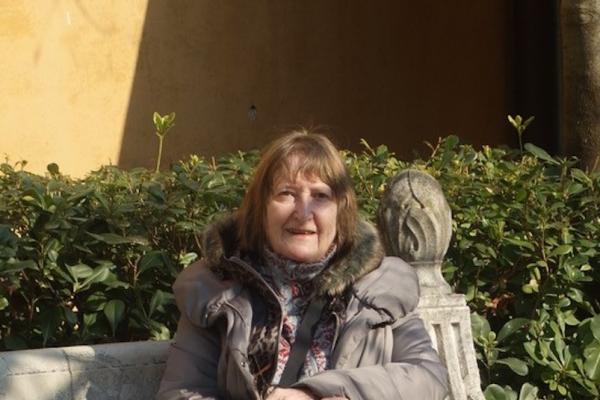Professor Crozaz is interested in the in-situ study of trace elements in both extraterrestrial (meteorites and lunar samples) and terrestrial rocks to better understand their formation and to gain insights into the chemical nature of their parent materials. Trace elements, and particularly the rare-earth elements (REE), are sensitive indicators of igneous differentiation processes, as they typically partition strongly into either the liquid or crystal phase of a magma system.
In collaboration with the late Research Professor Ernst Zinner, Professor Crozaz developed a method to measure REE and other trace-element abundances in 5 to 50 µm spots of individual crystals. With this technique, concentrations as low as 1 to 10 ppb (of each of the REE) can be measured, and even major silicates can be analyzed. This represented an improvement of at least a factor of 10 4 relative to electron microprobe analysis, the in-situ technique commonly used by petrologists and geochemists. Measurements are made on standard thin sections, after documentation by optical and scanning electron microscopy. The samples are bombarded with oxygen ions; the resulting ions are extracted and then separated in a mass spectrometer and counted. Average concentrations of rare earth elements (normalized to concentrations in C1 chondrites) in two phase from Dar al Gani 476.
The ion microprobe has become an important tool in geology to study trace elements and isotopes on a microscopic scale. Compared to analyses of bulk samples, investigations of trace elements in individual phases and grains reduce the risk of contamination from other phases, and offer the opportunity to study intergrain variations and crystal zoning. Equilibrium mineral assemblages may be evaluated, and evolutionary trends within a sample are not overprinted by minor REE-bearing minerals or mesostasis.
Professor Crozaz and her associates studied the origin and history of SNCs (a group of meteorites that are most likely ejecta fragments from Mars) and were interested in a variety of differentiated meteorites: the eucrites, the oldest basalts known in the solar system (which may be samples of the asteroid 4 Vesta), the aubrites, a group of extremely reduced meteorites, the ureilites, a puzzling group of objects which have also "primitive" characteristics. Enstatite chondrites, which are extremely reduced mineral assemblages, were also the objects of their attention. In addition, they investigated the ferroan anorthosites from the Moon, to understand the origin of these feldspathic highland rocks, and have contributed to the study of eclogite xenoliths formed in the terrestrial mantle. Large numbers of meteorites are now recovered in hot deserts and determining the extent to which their chemical and isotopic compositions have been altered by their long residence on earth was also a concern of theirs.
The prior research interests of Dr. Crozaz included the natural and artificial radioactivity of the atmosphere and its precipitations, the development of a method to date polar glaciers, the measurement of the influx of interplanetary dust on Earth, and the study of the dynamics of the lunar regolith and of the thermal history of meteorites. She has served on many national committees and is a Fellow of the American Geophysical Union and of the Meteoritical Society. In 1982, and again in 1990, she was part of an international group of scientists who spent five weeks collecting hundreds of meteorite fragments on the Antarctic polar plateau. One of the meteorites was identified, through a variety of geochemical techniques, to be the first lunar sample ever recognized on Earth.



